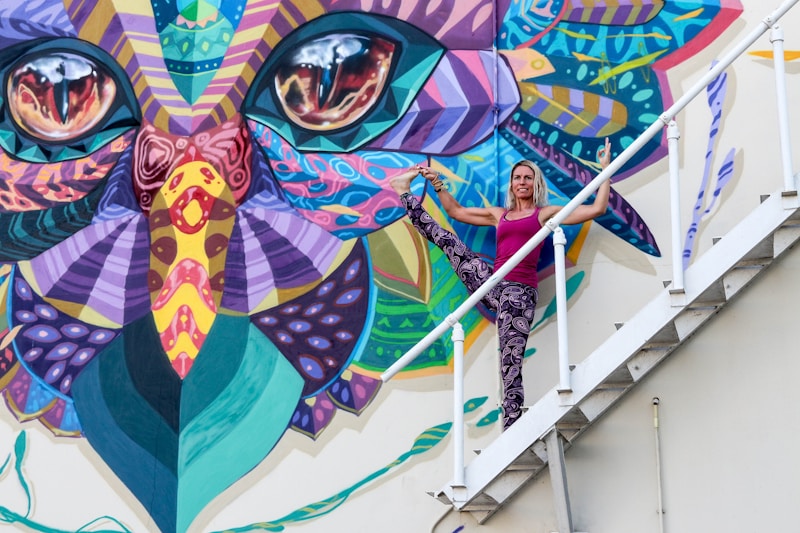Iyengar and Ashtanga: these two unique yoga practices are very different to each other, but they both also have an impressive following with many dedicated yogis around the world. Personally, I study and practise Iyengar style yoga, while one of my good friends is an Ashtangi. We normally have long chats about the differences in the two, and we constantly learn from each other and help balance out each others’ practices. Although we don’t always agree on everything, we do acknowledge one is not better than the other: where one is lacking the other supports.
Throughout their lives Pattabhi Jois and B.K.S. Iyengar changed the world of yoga and played huge parts in bringing yoga to the West. Researching and learning more about the origins of yoga and these two amazing practitioners is eye-opening since, relatively speaking, these forms of yoga from the past 100 years are still very young.
The History Of Iyengar and Ashtanga
Both Iyengar and Pattabhi Jois studied under Yoga Master Krischnamaycharya. Afterwards, they went their separate ways and developed their own methods they taught and practised throughout their lives.
Ashtanga: Although it was originally created by Krischnamaycharya it is more well known due to Pattabhi Jois who studied under him for over 25 years. It was originally designed for young boys as a way for them to exert energy. Pattabhi Jois was a highly devoted student and took the ancient texts further and created the vigorous Ashtanga yoga that is practiced today, creating a vigorous flow.
Iyengar: B.K.S. Iyengar’s apprenticeship was much more brief in comparison. He grew up more sickly and weak and had difficulty keeping up with the practice. He utilized the use of props to help him gain strength in poses. Which then transferred into his style of practice, relying heavily on the use of props to gain access to difficult poses. Through his intense focus on form, alignment, and effect on the body, Iyengar developed a more in-depth understanding of the āsanas.
The Difference In Practice
Ashtanga: Categorized as a vinyāsa flow, it connects movement with ujjayī breath. It is designed to calm the mind while cleansing the internal body by increasing your heart rate and making you sweat (which is believed to purify the body). Ashtanga Yoga also uses three energy locks (or bandhas) are also meant to help cleanse the internal organs. The practice itself consists of warming up with a few Sun Salutations and then moving into the Primary Series.
Iyengar: Based in Hatha Yoga, it’s primary focus is alignment. Rather than being in a flow, you are holding poses for a longer period of time, mainly assisted by props. This creates stamina in the muscles as you hold these poses. It is more ideal for people with injury, beginners, or advanced students learning alignment. The belief is achieve balance in the body, so it can calm the mind.
Comparing The Benefits
Ashtanga: Helps to strengthen the muscles through the repetitive practice as well as enhance your lung capacity. It is seen as a way to become stronger and more flexible. It also makes you sweat, as mentioned above, which in turn helps purify and cleanse the body.
Iyengar: Helps to lengthen and strengthen the muscles through holding poses for a period of time. There are many benefits listed in Mr. Iyengar’s book Light on Yoga ranging from internal benefits like decreased blood pressure to external physical benefits such as increased balance.
Let’s Look At Sequence
Ashtanga: 27 poses of the first primary series. It’s a vigorous routine jumping to and from poses, including vinyāsa. Ashtanga highly encourages home practice to further your self discovery and progress. Finding a class can help by spending time with a teacher to get adjustments and learn another part of a series. ‘Practice is progress’ is key!
Iyengar: Unlike Ashtanga, an Iyengar class can change each time. There is no set sequence but there is a certain way to sequence. Mainly consisting of groups of poses designed to help you reach the ‘peak pose’ of the class. The teacher will be warming your body up for that pose, the peak pose is then performed, and the class ends with a cool-down where you gradually decrease the energy in your body.
Where Are We Today?
Ashtanga: Pattabhi Jois and his teachings are carried on by many super stars in yoga such as the Swenson Brothers, Tim Miller, and Kino MacGregor. It’s one of the most popular yoga practices with many yoga studios around the world. It is also continuously revived thanks to Kino MacGregor’s monthly Instagram challenges.
Iyengar: Mr. Iyengar lives on mainly through his children in India, who now run his institutes. He also had two famous yogis study under him: Rodney Yee and Patricia Walden. My first yoga VHS was of Rodney Yee, courtesy of my mother. I very recently had a student in my class who actually studied underneath Guruji Iyengar, his daughter Geeta, and his son Prashant in India. She recognized my style of teaching right away and told me after class what it was like taking classes from the renowned Iyengar family. What a treat that must have been!
Iyengar’s Yin To Ashtanga’s Yang
Yoga is like music. The rhythm of the body, the melody of the mind and the harmony of the soul creates the symphony of life.
~ B.K.S. Iyengar.
As opposite as these two are they’re still yoga. Complementing each other and expanding the world of yoga with all the knowledge it brings us. Have you tried out either of these styles? Did you notice these (or any other) differences? I’d love to hear your accounts of your experience with either of these practices.












